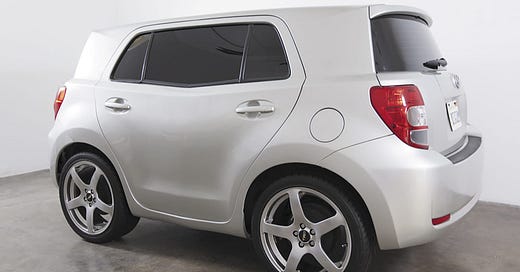Chinese Electric Cars, Microchip Shortages and Climate Change Have Something in Common?
A lot I seem to think...
What Is the Infant-Industry Theory?
The infant-industry theory states that new industries in developing countries need protection against competitive pressures until they mature and develop economies of scale that can rival their competitors. The infant industry argument is often cited as a rationale for protectionism and was developed by Alexander Hamilton and Friedrich List.
The Electric Vehicle (EV) growth market has forced industry stalwarts such as the conventional ‘big three’ to address their futures in the saturated and competitive auto market. Industry disruptors, such as Tesla (TSLA), while highly valued, face increasingly leveraged positions and threats to future economies of scale and scope from companies and countries that are interested in developing their nascent industry and technologies. Of recent note, contained within the infrastructure package to be passed in congress, $7.5 billion has been allocated for the construction of new EV charging stations. With an initial request of $14 billion, the real figure is a fraction, but could over time help broaden charging access as people seek to travel beyond known and existing routes best already accessible for charging.
Chinese Nascent Industry: NIO is one of several large Chinese automakers that is operating in the EV market and has seen over 250% growth in the last year. They have chosen to pursue ‘battery free ownership’. The battery of vehicles are compatible and take a mere 5 minutes to change. This is a strategy that TSLA notably chose not to pursue as they believed consumers preferred battery ownership and utilizing charging stations that, at their fastest, charge for a range of 200 hundred miles over 15 minutes. These stations are not your conventional garage plug in, and so realistic charging times are 20-40 hours for a consumer at home. As China protects its nascent industry, NIO has the potential to grow rapidly in a market of 1.4 billion people alone.
NIO battery swap station which requires 5 minutes for a full range charge
Battery Production and the Implications of Lithium - There is an estimated 500,000 gallons of water per ton of lithium extracted. It is an incredibly resource intensive endeavor that ultimately powers almost all electric and hybrid vehicles in the U.S. Many mines encroach and seek to encroach on federally protected lands as well as lands of sovereign tribal nations. The industry is expected to grow substantially in the coming years, but what are the social costs and environmental costs for a perceived green auto revolution?
Lithium Mine in Western Australia
Michael Stanley Whittingham received a Nobel Prize for his development and work on lithium ion batteries in the 1970’s.
Microchip Shortages: I Thought Microchips Were Only in my Vaccine?
NVIDIA: I highlight this company as an industry disruptor with over 80% growth this year compared to roughly 10% for industry competitor Intel. The microchip shortage and surging demand would spell a shake up in the equilibrium of price and quantity demanded. Given that this is America and credit is more accessible than healthcare, it would be difficult to see devaluation in these related companies as consumers simply take out higher loans to match price increases. In a July, 21st article in the WSJ, it is argued that, “At an industry level, it is also having beneficial side effects, as consumers pay up for the few vehicles available, often helped by easy credit terms.” The reality of boundless ‘cheap money” would lend one to think despite any shortages through 2022, NVIDIA will see increased growth and potential market share takeover.
Climate Change and Virtue Signaling
Oh yeah, that. In Seattle it hit 106 degrees this Summer for example, so writing this as though Electric Vehicles present the future of a cooling or temperature neutral planet was not the intent. While they can provide a transition to lower carbon emitting driving, they don’t address the unnecessary excess of car travel in the country that prides itself desperately on car culture. The EV future more realistically will provide the feeling of doing something about the underlying issue, but being unaware of the perpetuation of car culture. It’s not far off of a wealthy white Seattle neighborhood having two Tesla’s in the driveway and a ‘Black Lives Matter’ sign in the front yard. This is virtue signaling and cause marketing wrapped into a bundle of do-nothingness.
Tesla Drivers ‘Solving’ Massive Flooding In China
-Andrew Jensen 8.4.21
Sources:
https://www.wsj.com/articles/car-makers-need-more-chips-today-better-chips-tomorrow-11626877264
https://www.nytimes.com/2021/05/06/business/lithium-mining-race.html
https://www.nytimes.com/2021/08/02/us/politics/infrastructure-bill.html
https://www.investopedia.com/ask/answers/042215/what-difference-between-economies-scope-and-economies-scale.asp
https://www.investopedia.com/terms/i/infantindustry.asp
tesla.com/support/charging
https://policyadvice.net/insurance/insights/how-much-do-americans-drive/
https://www.theverge.com/2021/4/15/22385261/nvidia-gpu-shortage-rtx-3080-warning-comments-2021
https://www.nio.com/news/nio-launches-battery-service






